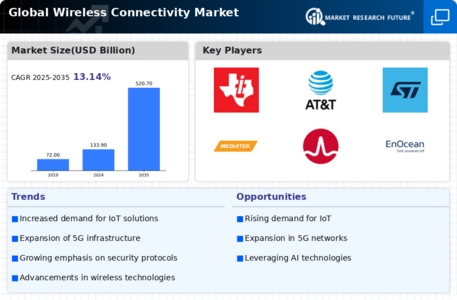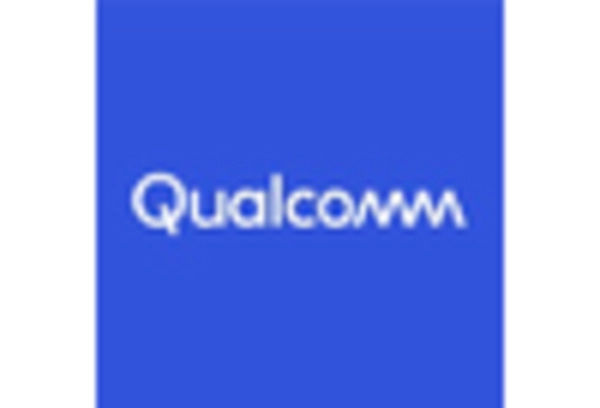Market Analysis
In-depth Analysis of Wireless Connectivity Market Industry Landscape
Continuous growth is one of the main things that drives this market. Fifth-generation (5G) technology has totally changed how gadgets connect and talk to each other. Businesses are working hard to get faster data rates, less delay, and more room so they can build and use 5G networks. Many businesses spend a lot of money on research and development to stay ahead of the competition. This is because technology is always getting better. Additionally, the growth of Internet of Things (IoT) devices has assisted the wireless connectivity market. Everyday gadgets, like industrial monitors and smart home tools, are becoming more and more connected to each other. This makes strong and reliable wireless communication critical. In response, there is a growing need for a variety of connection options that can meet the unique needs of different Internet of Things apps. Because people have different needs, different wireless communication technologies have coexisted. How the market works is also affected by how consumers' needs for seamless connectivity change over time. In addition to homes and offices, consumers now expect high-performance wireless connectivity in public places, on public transportation, and in remote areas. Demand for always-on access is pushing the building of wireless infrastructure in places that weren't previously connected, which is growing the market. Legal and policy decisions made by the government also have a big impact on the world around wireless connection. Regulatory choices about frequency distribution, licenses, and security standards have a direct effect on the kinds of things that happen in the market. Eventful things like the addition of strict security measures or the release of new frequency bands for business use can change the way companies compete and the strategies they use. The strategies that big companies use to fight are another thing that affects market trends besides these. A lot of businesses get ahead in the market by forming partnerships, merging, or buying something else. These specific acts have an effect on both how the market is set up and how new tools are made and used. That being said, the business does have some issues. Many people are worried about how safe their connected devices are because of security issues, especially now that the Internet of Things (IoT) is around. Standardized standards and connectivity between different wireless technologies are always needed to make it easier to combine different types of technology in different ways. Concerns about sustainability are also being raised because more and more gadgets are linked and use more energy. Also, wireless infrastructure has negative effects on the environment.
















Leave a Comment